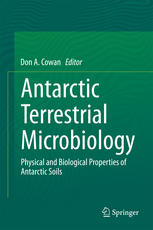

Most ebook files are in PDF format, so you can easily read them using various software such as Foxit Reader or directly on the Google Chrome browser.
Some ebook files are released by publishers in other formats such as .awz, .mobi, .epub, .fb2, etc. You may need to install specific software to read these formats on mobile/PC, such as Calibre.
Please read the tutorial at this link: https://ebookbell.com/faq
We offer FREE conversion to the popular formats you request; however, this may take some time. Therefore, right after payment, please email us, and we will try to provide the service as quickly as possible.
For some exceptional file formats or broken links (if any), please refrain from opening any disputes. Instead, email us first, and we will try to assist within a maximum of 6 hours.
EbookBell Team

5.0
68 reviewsThis book brings together many of the world’s leading experts in the fields of Antarctic terrestrial soil ecology, providing a comprehensive and completely up-to-date analysis of the status of Antarctic soil microbiology.
Antarctic terrestrial soils represent one of the most extreme environments on Earth. Once thought to be largely sterile, it is now known that these diverse and often specialized extreme habitats harbor a very wide range of different microorganisms.
Antarctic soil communities are relatively simple, but not unsophisticated. Recent phylogenetic and microscopic studies have demonstrated that these communities have well established trophic structuring and play a significant role in nutrient cycling in these cold and often dry desert ecosystems. They are surprisingly responsive to change and potentially sensitive to climatic perturbation.
Antarctic terrestrial soils also harbor specialized ‘refuge’habitats, where microbial communities develop under (and within) translucent rocks. These cryptic habitats offer unique models for understanding the physical and biological ‘drivers’ of community development, function and evolution.